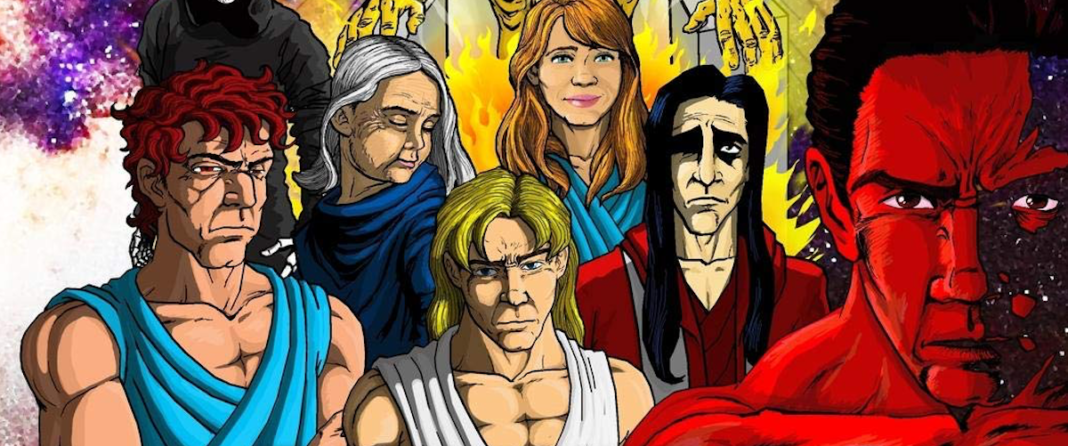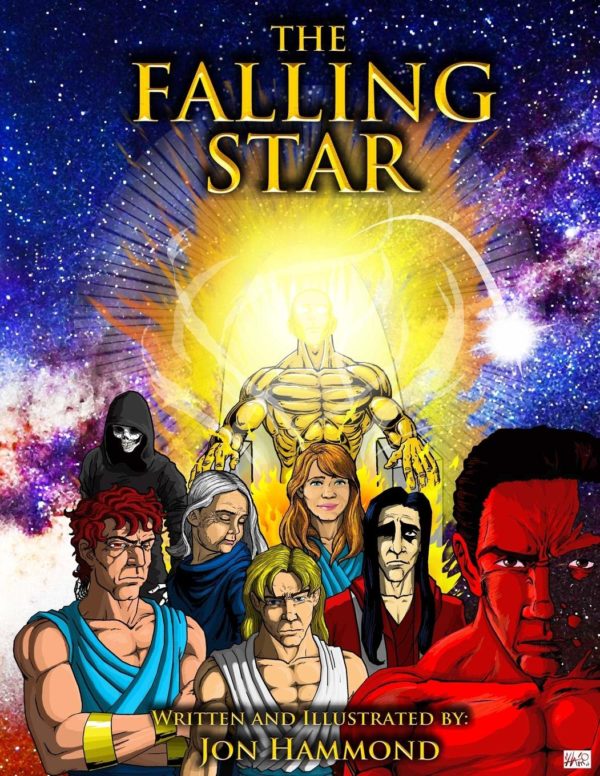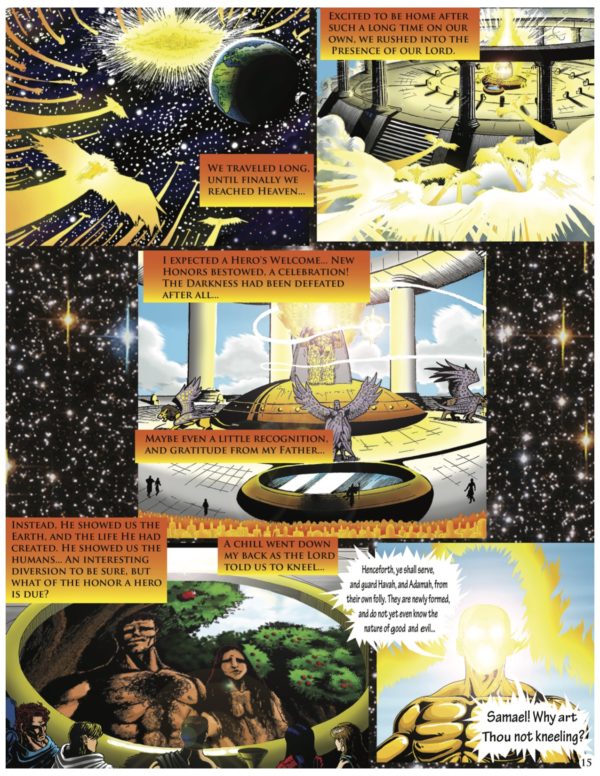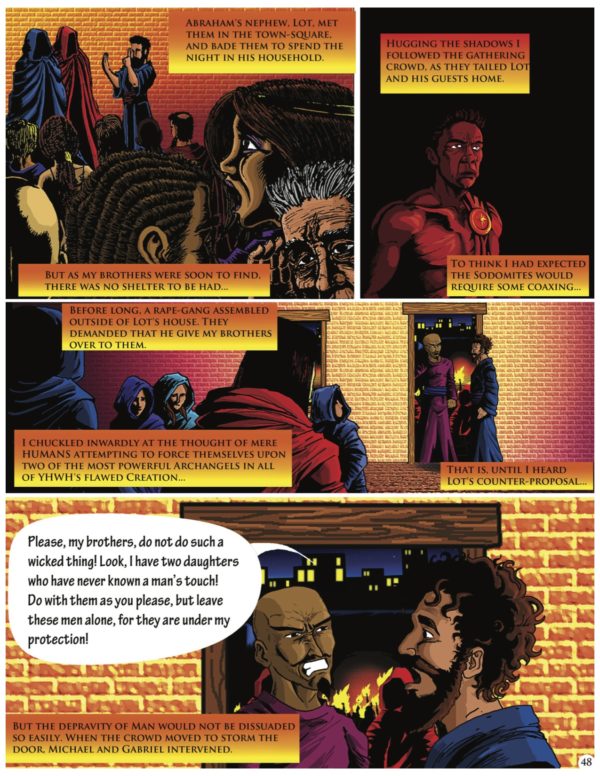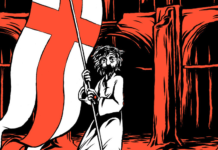The Falling Star Volume 1
By Jon Hammond
Hypatia Press
When I was young, I had questions about God. They seemed to me questions anyone would ask about someone who was demanding something from them, but I didn’t know anyone else who was asking them.
The most basic question was, “Who is God really?” and that was followed up with “And what does he really want?” It seemed to me that in treating humans like children, the Bible brushed aside his true origin and his real intent. Where did he come from anyhow? I guess I was treating religion like science fiction or fantasy.
After reading The Falling Star, it felt like Jon Hammond must have had similar thoughts to mine. His response to these conundrums is to work it out by going over the texts that fuel the beliefs themselves, to examine the questions through a reframing of the narratives that the true believers cling to. It’s not an analysis of the Bible, but rather a retelling of it from the point of view of Lucifer.
Hammond’s first volume traces the story of Lucifer from the beginning of the universe through numerous Old Testament events, finishing off just after the parting of the Red Sea. At his creation, he is Samael, the most powerful of God’s archangels sent to war with the darkness at the birth of the universe. But Samael is almost immediately stymied by the God’s decision making, choosing angels of lesser power to command the heavenly forces, often leaving Samael on the sidelines to stew.
For Samael, this is only the beginning of the disrespect that God directs his way, and any challenge to God’s actions only results in retaliatory fury. Things take a turn for the even worse when God gets a new toy — a blue planet he created populated by living creatures that he can manipulate for some vague plan to unfold. Samael questions whether God should waste his time with this and is immediately thrown into an eternal contradictory position that has him stalking God and his agents on Earth, sometimes to try and figure out what the plan actually is and other times to thwart them in order to prove a point. The latter action increases with time, and Samael’s frustration grows when his clandestine mutinies just end up allowing things to play out in God’s favor.
Hammond recasts scores of famous Biblical stories from Samael’s point of view, often casting the fallen angel as a clandestine participant in events. Samael is only marginally sympathetic — in his own way, he’s as conceited as God and often a major drama-queen. But I’d probably be a drama-queen in his position too. Samael is portrayed as the eternal angry teenager in furious rebellion, though I’m very curious to see how Hammond’s characterization of him develops as he matures over following volumes and he develops his own agency in the grand scheme.
Unexpectedly The Falling Star ends up being a fun book thanks to its Biblical revisionism, though the tone isn’t light-hearted. While there’s lots of intense dialogue that questions God’s cruelty and inconsistancies, there is a level to which Samael’s constant frustration can have a comedic feel. Samael’s counterattacks grow into cosmic Rube Goldberg devices that are so determined to wrap themselves around God’s plan in order to obstruct them that they mostly end up circling back to their starting point with God’s intent bypassing their attempted obstruction altogether.
This is Hammond’s first graphic novel and there are aspects to it that do feel as though he is at the start of his career, especially given the ambitious subject matter and scope he’s chosen. The writing and art could sometimes use some finessing, which is natural for most first efforts like this. One of my favorite aspects of the book is his rendering of the celestial abodes frequented by God and his cohorts, like Jack Kirby designing Unarius Academy-approved landscapes, as published by Jack Chick. In that way, Hammond perfectly aligns his presentation with the weirdness of what he is ideologically opposing, giving it exactly the right vibe as a counterpoint to the accepted story of the universe.


